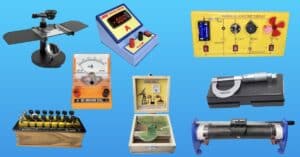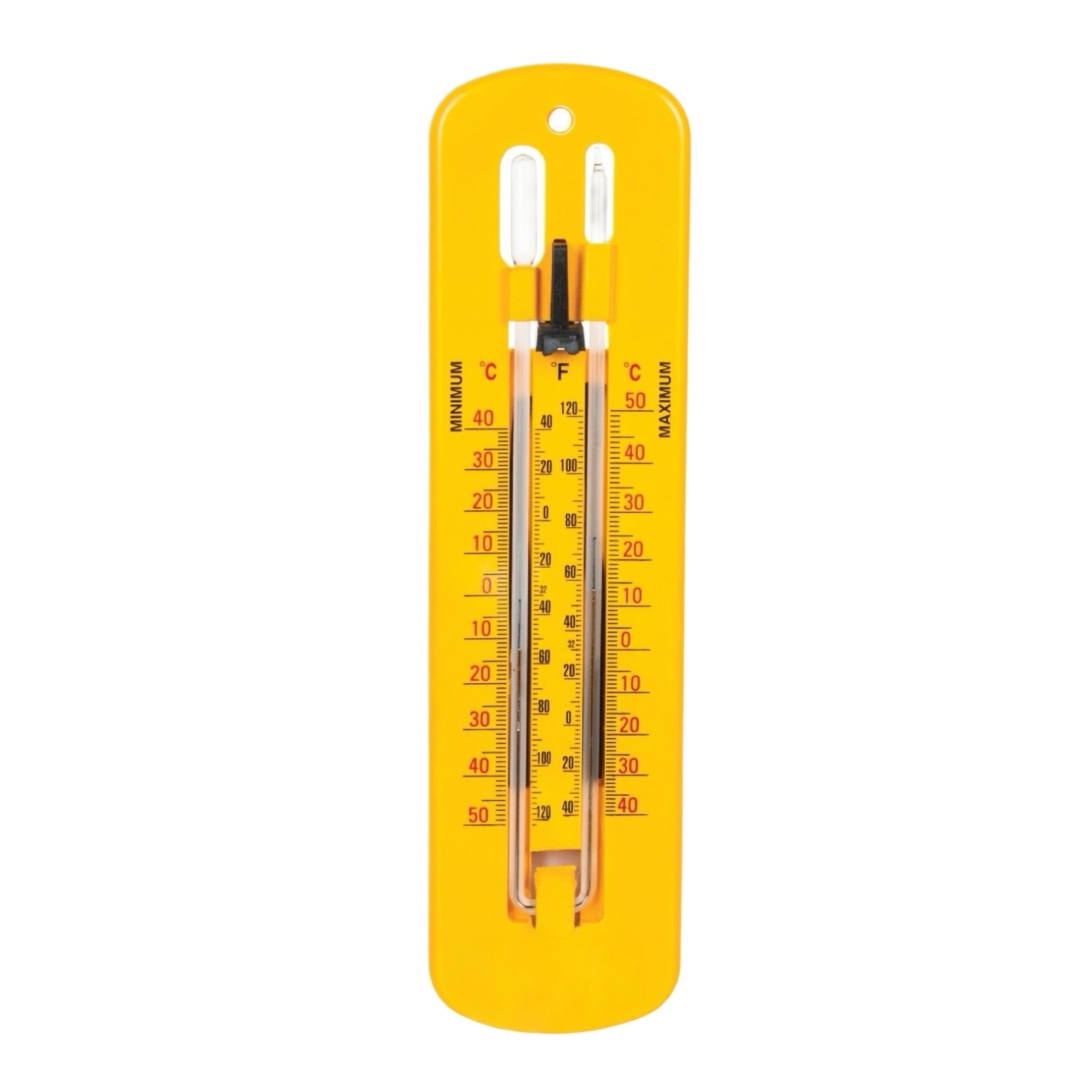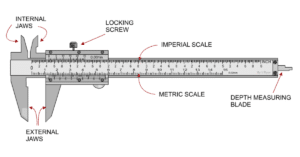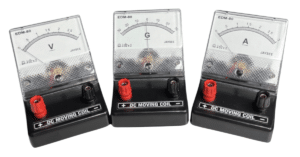
Physics Lab Equipments Manufacturer, Suppliers, and Exporters in Ambala, India
In the dynamic world of education, the role of physics lab equipment manufacturers cannot be overstated. These tools not only



The measurement of temperature has been a fundamental aspect of scientific inquiry and practical application for centuries. From early rudimentary devices to sophisticated modern sensors, thermometers have evolved to meet diverse needs. Among the historical milestones in thermometry is the invention of the maximum minimum thermometer, a crucial instrument for recording the extremes of temperature over a given period. This capability is particularly vital in fields such as meteorology and horticulture, where understanding the range of temperature fluctuations is essential.1 The Maximum Minimum Thermometer or Six’s thermometer, invented in 1780 by British scientist James Six, represents the first practical and widely adopted design of such an instrument, and its basic principles continue to be utilized even in contemporary applications.
A maximum minimum thermometer is defined as a device specifically designed to register both the highest and the lowest temperatures that occur within a defined time interval.1 This is achieved through a combination of physical principles, primarily the thermal expansion and contraction of liquids, coupled with a mechanism to retain the readings at the extreme points. The ingenious design of the Six’s thermometer utilizes a combination of alcohol, mercury, and small steel indices within a graduated glass tube to passively record these temperature extremes.4 The use of these specific materials and the configuration of the instrument allow for the independent tracking of both the maximum and minimum temperatures reached since the last reset of the device.
The invention of the Six’s thermometer is attributed to James Six (1731–1793), a British scientist born in Canterbury.1 Six’s work culminated in the creation of this self-registering thermometer in 1780, a device that would become widely known and remain in use for over two centuries.2 The Royal Society of London published an account of his innovative thermometer in 1782, bringing it to the attention of the scientific community.3 Recognition of the significance of his invention led to Six’s election as a Fellow of the Royal Society in 1792.3 A comprehensive description of his work and the thermometer’s construction and use was detailed in his book, “The Construction and Use of a Thermometer for Shewing the Extremes of Temperature in the Atmosphere, during the Observer’s Absence, together with Experiments and Variations of Local Heat; and other Meteorological Observations,” which was published posthumously in 1794.7
Prior to Six’s contribution, attempts had been made to develop thermometers capable of recording temperature extremes. Notably, Lord Charles Cavendish presented designs for separate maximum and minimum ‘overflow’ thermometers to the Royal Society in 1757.3 However, these earlier designs were reported to be fragile, difficult to use, and lacked precision.3 Six’s thermometer offered a significant improvement by providing a robust and simple instrument that could record both maximum and minimum temperatures on a single device, marking a crucial step forward in thermometry.3 His background, transitioning from the silk weaving industry to a keen interest in natural philosophy, particularly astronomy and meteorology, likely provided the impetus for developing such an instrument for unattended temperature monitoring, essential for these fields of study.7
The term “double scale” in the context of a Six’s thermometer refers to the presence of two distinct temperature scales integrated into the U-shaped glass tube of the instrument.1 One of these scales is specifically calibrated to record the maximum temperature reached during a period, while the other is designed to record the minimum temperature encountered.1 These two scales are typically positioned along the two arms of the U-tube, often running in opposite directions relative to the bend of the tube.11 This arrangement, while potentially appearing counterintuitive at first glance, allows for direct reading of both temperature extremes from their respective indicating mechanisms.
In many Maximum Minimum thermometers, it is common to find both Fahrenheit and Celsius scales included on the instrument.1 Often, one scale will be located on the inside of the U-bend, while the other is positioned on the outside.1 This dual scale feature enhances the versatility of the thermometer, making it usable by individuals familiar with either temperature unit, thereby facilitating broader adoption across different regions and applications. Furthermore, the current ambient temperature is indicated by the level of the mercury within the U-tube, and this reading should ideally align on both the maximum and minimum scales at any given time, serving as a check for the instrument’s proper functioning.1 Any discrepancy between the current temperature readings on the two scales might suggest a calibration issue or damage to the thermometer.
The Six’s maximum minimum thermometer operates based on a clever combination of physical principles and mechanical indicators. The core of the instrument is a U-shaped glass tube, with a sealed glass bulb at the top of each arm.1 One of these bulbs, typically the one associated with the minimum temperature scale, is filled with alcohol.1 The other bulb contains either a vacuum or a low-pressure alcohol vapor.1 The bend at the bottom of the U-tube contains a thread of mercury, which acts as a visible indicator of temperature changes.1
Changes in the ambient temperature cause the alcohol in the first bulb to expand or contract.1 When the temperature rises, the alcohol expands, increasing its volume and pushing down on the mercury in the U-tube.14 This action forces the mercury to move up the other arm of the U-tube, towards the vacuum-containing bulb.14 Conversely, when the temperature falls, the alcohol contracts, reducing its volume and allowing the mercury to move back towards the alcohol-filled bulb, rising in that arm of the U-tube.14 The vacuum in the second bulb facilitates the free movement of the alcohol and mercury by preventing any significant pressure buildup that could impede accurate readings.1 The choice of alcohol as the thermometric liquid is due to its relatively high coefficient of thermal expansion, making it sensitive to even small temperature variations.1
To record the maximum and minimum temperatures, the Six’s thermometer employs two small steel indices, also known as markers or floats.1 These indices are typically sprung into the capillary tube or held in place by a magnetic plate and rest on the surface of the mercury column in each arm of the U-tube.1 As the mercury moves due to temperature changes, it pushes one of the indices upwards in the maximum temperature arm when the temperature rises, and the other index upwards in the minimum temperature arm when the temperature falls.1 These indices are designed to remain at the furthest point they are pushed by the mercury, even after the mercury level recedes due to a change in temperature.1 The lower end of the index in the maximum temperature arm indicates the highest temperature reached, while the lower end of the index in the minimum temperature arm indicates the lowest temperature reached since the last reset.1 After taking a reading, the thermometer is reset by using a small magnet to slide the steel indices back down to the current level of the mercury.1 This resetting process prepares the thermometer to record the temperature extremes for the next observation period, which is typically 24 hours for measuring diurnal temperature variations.1
Diagram: A typical Six’s maximum minimum thermometer consists of a U-shaped glass tube. At the top of the left arm is a bulb filled with alcohol. The top of the right arm contains a vacuum or low-pressure alcohol vapor. The bend at the bottom of the U contains a thread of mercury. In each arm of the U-tube, resting on the surface of the mercury, is a small steel index. Along each arm of the U-tube is a temperature scale. The scale on the right arm, used to read the maximum temperature, increases upwards. The scale on the left arm, used to read the minimum temperature, increases downwards (inverted).
The Six’s maximum minimum thermometer has found widespread use across various fields due to its ability to record temperature extremes reliably without continuous monitoring.1 One of its primary applications is in meteorology, where it is used to record the daily maximum and minimum air temperatures at weather stations.1 This data is crucial for understanding weather patterns, climate monitoring, and forecasting. The thermometer’s simplicity and independence from electrical power make it particularly useful in remote locations or for historical temperature records.
In horticulture, the Six’s thermometer is a valuable tool for monitoring temperature fluctuations within greenhouses and gardens.1 Tracking the highest and lowest temperatures reached is essential for maintaining optimal growing conditions for different plant species, as extreme temperatures can be detrimental to plant health and productivity. The thermometer’s ease of use and clear indication of temperature extremes make it popular among gardeners and horticulturalists.
Beyond these primary applications, Six’s thermometers are also commonly used in domestic settings and gardens for personal temperature monitoring.2 They provide a simple way for individuals to keep track of the temperature range in their local environment. Historically, modified versions of the Six’s thermometer were even used in oceanography to record sea temperatures at various depths.3 These adaptations, such as enclosing the bulb in a protective sheath to withstand pressure, demonstrate the versatility of the fundamental design and its importance in early scientific exploration.
The Six’s maximum minimum thermometer offers several advantages that have contributed to its longevity and continued use.1 Its primary benefit is the ability to record both the maximum and minimum temperatures reached over a period without the need for constant observation.1 This is a significant advantage over standard thermometers that only display the current temperature. The design is relatively simple and robust, with the core principle remaining effective for centuries.1 Furthermore, compared to some modern electronic thermometers, the Six’s thermometer can be inexpensive 25 and does not require a power source to operate. The mechanical indices provide a direct visual record of the temperature extremes.1
However, the Six’s thermometer also has certain disadvantages.1 Its accuracy can be lower than that of some modern digital thermometers, and the response time to temperature changes might be slower.3 Traditional Six’s thermometers contain mercury, which poses environmental and health risks if the instrument breaks.1 The thermometer requires manual resetting after each reading period, which can be inconvenient for continuous monitoring.1 Reading the scales, particularly the inverted minimum scale, can sometimes be challenging and prone to parallax errors.34 Additionally, mechanical issues such as separation of the mercury column can occur, leading to inaccurate readings.
| Feature | Six’s Thermometer | Digital Thermometer | Mercury-in-Glass Thermometer | Infrared Thermometer |
| Records Max/Min | Yes | Yes (some models) | No (standard) | No |
| Accuracy | Moderate | High | Moderate to High | Moderate |
| Response Time | Slower | Fast | Moderate | Very Fast |
| Power Source | None | Battery | None | Battery |
| Safety | Mercury hazard in some models | Generally safe | Mercury hazard | Safe (non-contact) |
| Ease of Use | Simple operation, reading inverted scale can be tricky | Generally easy, digital display | Simple operation, parallax error possible | Easy to use, but surface reading only |
| Cost | Relatively inexpensive | Varies, some models inexpensive, others more costly | Inexpensive | Can be more expensive |
| Continuous Monitoring | Requires manual reading and resetting | Some models offer data logging | No | Instantaneous reading only |
To read a Six’s maximum minimum thermometer, first observe the current temperature indicated by the top of the mercury column in both arms of the U-tube.1 These readings should be the same if the thermometer is functioning correctly. Next, locate the index on the maximum temperature scale, which is typically on the right side of the U-tube and increases upwards.1 The maximum temperature reached since the last reset is indicated by the bottom of this index. Then, find the index on the minimum temperature scale, usually on the left side of the U-tube and with an inverted scale (increasing downwards).1 The minimum temperature is read from the bottom of this index as well. It is important to read the scales carefully, noting the direction of increasing values to avoid errors.11 The inverted scale for minimum temperature is a key characteristic to remember.11
Resetting the Six’s thermometer is crucial for obtaining accurate readings for the next observation period.1 The most common method involves using a small magnet to slide the steel indices back down until they rest on the top of the mercury columns.1 This should be done gently to avoid separating the mercury column. Some designs may incorporate a push button mechanism that, when pressed, uses a magnet or other means to reset the indices.1 In certain variations where the indices are unsprung, the thermometer might be reset by tilting it vertically, allowing gravity to pull the indices back to the mercury surface.1 It is generally recommended to reset the thermometer daily, typically at a fixed time such as 9:00 AM, to record the temperature extremes for the preceding 24-hour period.1 Ensuring the thermometer is in an upright position during both reading and resetting is important for the proper functioning of the instrument.43
The original Six’s thermometer design utilized alcohol as the primary thermometric fluid and mercury as the indicator, with steel indices to record the extremes.1 Over time, variations and adaptations of this basic design have emerged. One significant development is the creation of mercury-free versions.1 These modern adaptations employ other immiscible liquids, such as oil of creosote or proprietary fluids, along with magnetic markers, to achieve the same functionality while addressing the environmental and safety concerns associated with mercury.1 For example, in 2006, a UK company patented a mercury-free version using two other immiscible liquids to position magnetic markers in a similar fashion to the mercury version.1
Variations in the physical design also exist, with some models featuring different shapes, mounting mechanisms, or protective housings for specific applications.21 For instance, thermometers designed for marine use, such as those employed in oceanography, have been modified with stronger glass bulbs enclosed in protective sheaths to withstand the pressure at depth.21 While the query focuses on the traditional Six’s thermometer, it is worth noting the advent of digital maximum minimum thermometers. These modern instruments provide electronic readings, often with higher accuracy and the ability to log data over time. However, the fundamental principle of mechanically recording temperature extremes, pioneered by James Six, remains relevant in many applications where simplicity, reliability without power, and cost-effectiveness are prioritized. Earlier variations also included designs like Rutherford’s separate maximum and minimum thermometers from 1790, which utilized different liquids and ivory indices, highlighting the evolution towards the integrated and more robust design of the Six’s thermometer.55
The Six’s thermometer uses the expansion and contraction of alcohol to push a mercury column. Small steel indices resting on the mercury are pushed to the extreme positions reached by the mercury as the temperature changes. These indices remain in place, recording the highest and lowest temperatures until manually reset.
Common issues include a separated or broken mercury column, the formation of air bubbles within the tube, and mercury being positioned above the steel indices. These problems can lead to inaccurate readings and may require specific corrective actions or replacement of the thermometer.
Yes, besides meteorology, Six’s thermometers are commonly used in horticulture, particularly in greenhouses, for monitoring temperature extremes that can affect plant growth. They can also be used for general environmental monitoring in various settings.1
The measuring range of a Six’s thermometer can vary depending on the model, but a common range is from -30 to +50 degrees Celsius.
The Six’s maximum minimum thermometer, invented by James Six in 1780, stands as a testament to ingenious scientific design. Its U-shaped structure, utilizing the interplay of alcohol and mercury, along with mechanical indices, provides a simple yet effective means of recording the highest and lowest temperatures over a given period. As the first practical instrument for this purpose, it holds significant historical importance in the field of temperature measurement. Despite the advancements in modern digital thermometry, the Six’s thermometer continues to find relevance in specific applications, particularly in meteorology and horticulture, where its reliability, independence from power sources, and cost-effectiveness remain valuable assets. While modern adaptations have addressed safety concerns by introducing mercury-free versions, the fundamental principles of Six’s original design endure, highlighting the lasting legacy of his contribution to the science of thermometry.

In the dynamic world of education, the role of physics lab equipment manufacturers cannot be overstated. These tools not only

The Vernier caliper least count is the smallest measurement it can accurately determine. It’s the difference between one main scale

In electrical measurements, two essential instruments play a significant role: the ammeter and the voltmeter. Both instruments measure electrical quantities
Samtech Instruments, established in 2002, is a leading manufacturer & supplier of Educational Meters, Solar Energy Kits & Scientific Instruments.
No account yet?
Create an AccountSAMTECH INSTRUMENTS
Typically replies within minutes
Any questions related to The Six’s Maximum Minimum Thermometer: Principles, History, and Applications?
🟢 Online | Privacy policy
WhatsApp us

